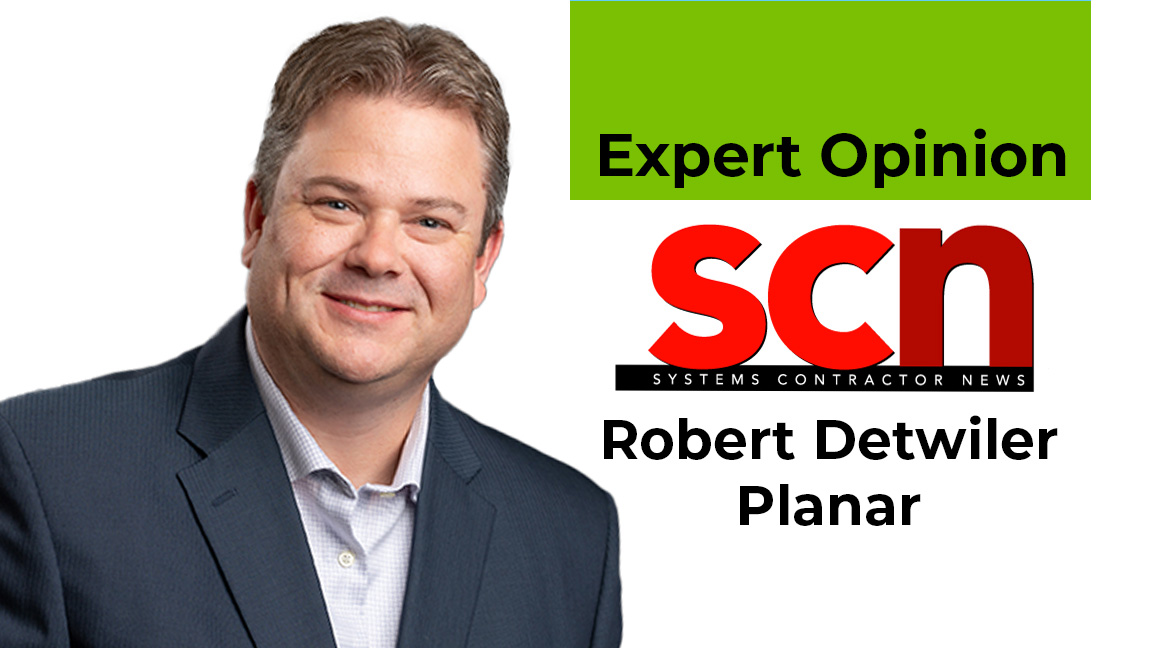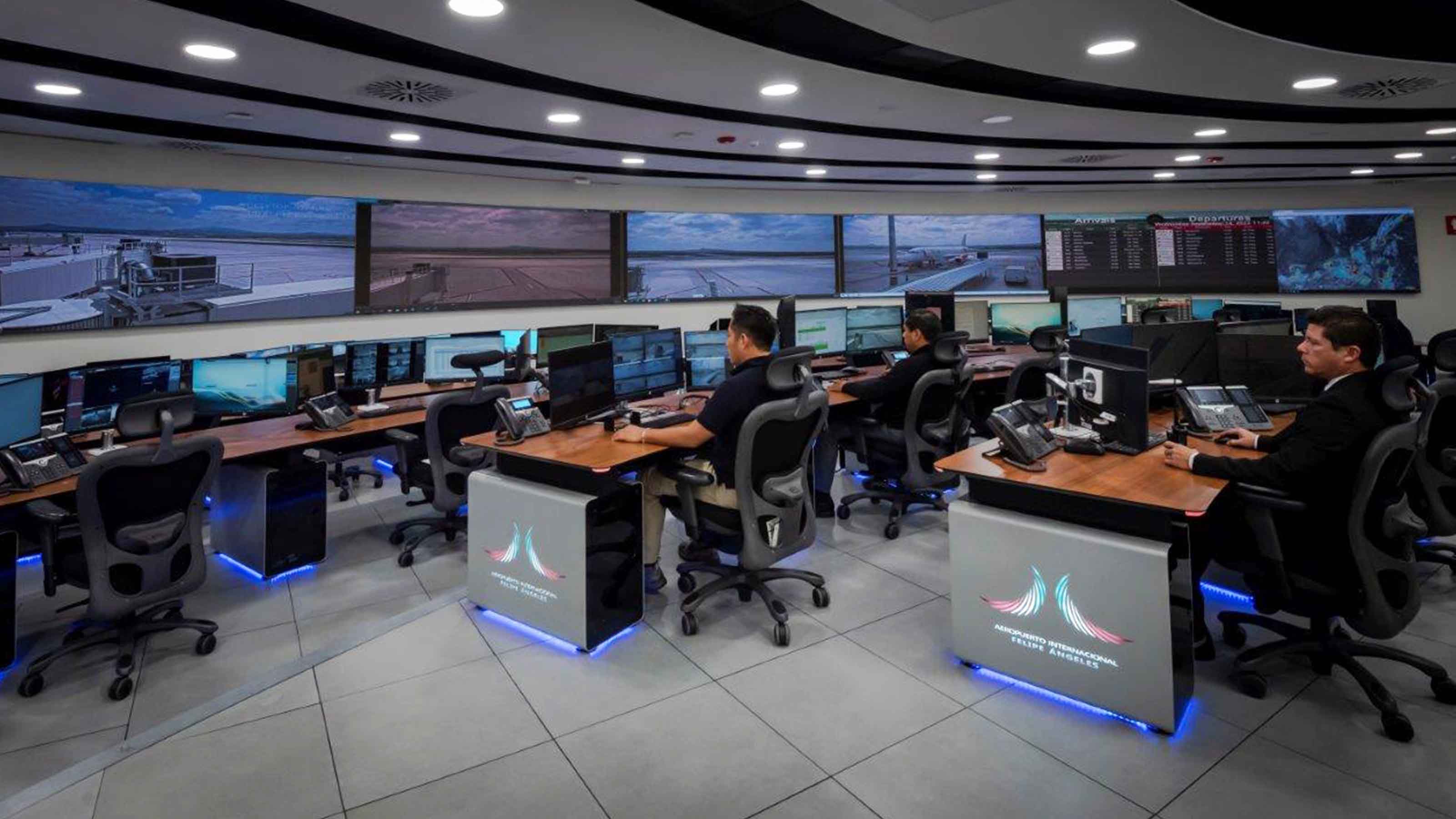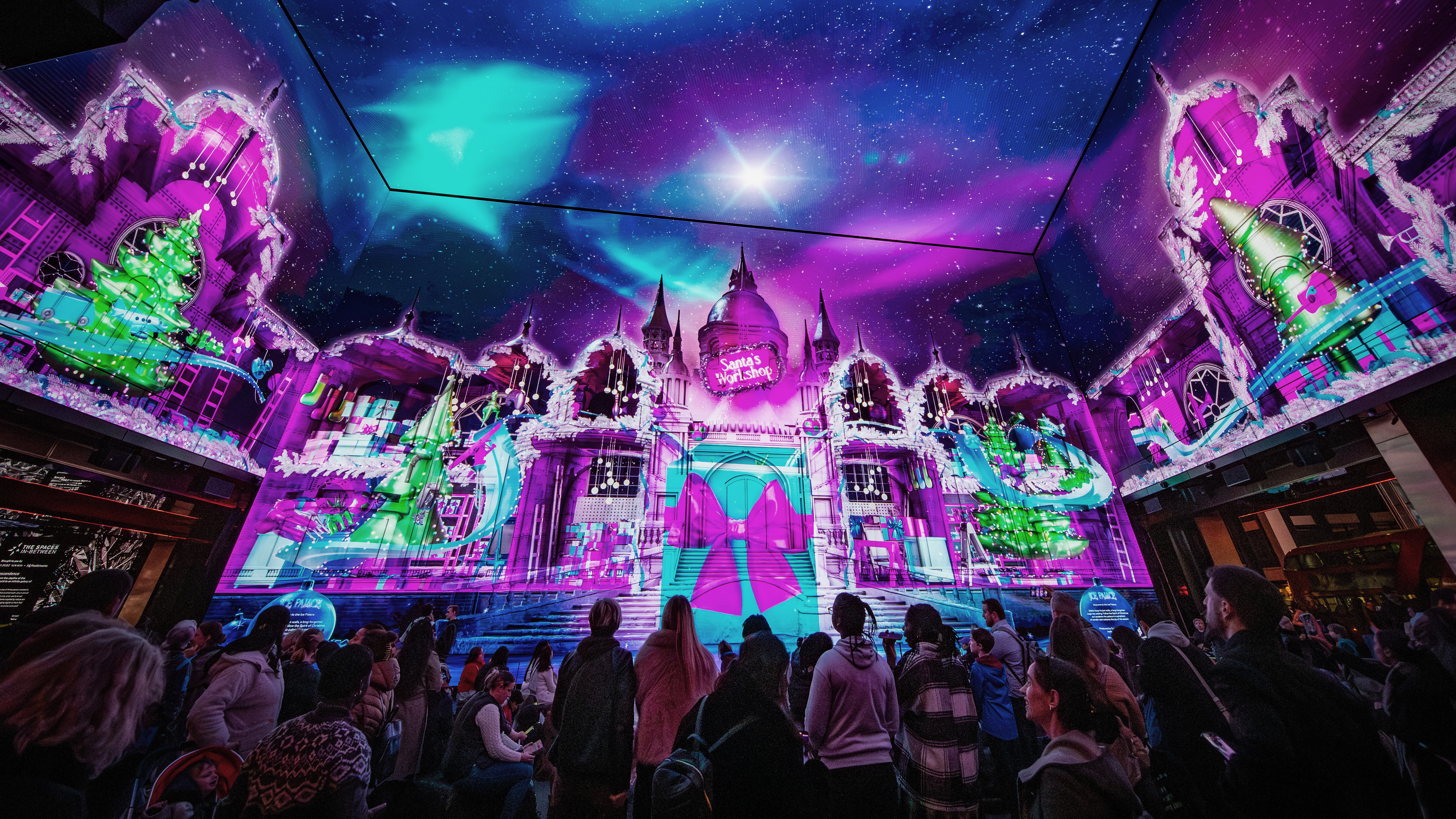The Heat Is Off
New technologies and installation strategies are helping to cool down today's LED deployments.

Much like turning on a light bulb emits warmth, electronics generate heat. This includes display technology. Of course, customers and employees don’t want to cook in front of a video wall as they’re monitoring emergency situations in a control room, collaborating on a conference call, shopping for clothes or even watching the game over a meal.
Today’s dvLED displays are becoming increasingly efficient. Newer technologies like MicroLED and chip-on-board (COB) offer customers benefits that range from reduced energy consumption and cost savings to more true-to-life, uniform visuals with increased contrast and deeper blacks. Even high-brightness models continue to deliver sustained brightness with minimal power consumption. So, what steps can be taken to help minimize display heat to maximize performance and support a longer lifespan?
Differentiating Displays

As an LED display operates, an electrical current flows through its many components, naturally generating heat. This includes LED modules, power supplies, control hardware, cables, connectors, structure, and screws. With that, a device running at a lower power would produce less heat.
Thanks to falling price points and advances in technology and manufacturing, today’s LED display options are more accessible and diverse than ever before. This makes it possible to find a solution for nearly every need.
For customers who need to clearly display more detailed content for up-close viewing distances, MicroLED presents some of the finest pixel pitches available. This is achieved by placing a greater number of small-sized (generally under 100 microns) red, blue, and green diodes closer together within the display, which helps facilitate the highest resolution.
In addition to being significantly smaller than standard LEDs, MicroLEDs are also energy efficient, delivering better brightness while producing less heat. With the latest advancements in MicroLED, today’s customers are benefitting from lower power models offering 500 nits of brightness with as little as 68 watts of power consumption. This is a great option for low-ambient light conditions, in addition to customers who are energy-conscious.
As a technology that’s quickly taking the industry by storm, COB technology takes the same blue, green, and red diodes and mounts them directly on the display module with a film layer on top. This not only provides a durable, matte finish and improved viewing experience with outstanding blacks, but also helps maximize light output while minimizing energy loss.
A daily selection of the top stories for AV integrators, resellers and consultants. Sign up below.
Energy loss takes place when energy moves from one location to another and is converted into another form. Often, this process can turn some of the energy into heat. In the case of an LED display, minimal energy loss allows more energy to be converted into light as opposed to wasted as heat. As a result, customers experience consistent visuals with lower operating costs, plus energy efficiency with reduced power consumption. Good heat management will ultimately help a product live longer.
By comparison, dvLED displays are constructed with modular tiles that contain densely packed LEDs, eliminating the need for a backlight while continuing to offer customers improved heat dissipation. This means we’re seeing stable operation even during extended use.
Take It Down a Notch
Consider an organization or health institution that is installing an LED video wall as a lobby statement piece or donor appreciation wall. How close will users be? Will the display feature touch capability? If a video wall gives off significant heat to the touch or as individuals are facing it, the temperature will distract users and ultimately detract from the message or user experience being delivered.
Another key factor worth exploring is air flow. Does the space where the video wall is deployed have or need a dedicated air conditioning unit? For the display itself, fans can be used to circulate air within the display and prevent overheating, but more manufacturers have moved away from this design due to the unwanted noise that often results.
Remote power supplies serve as an excellent device for managing video wall heat, allowing users to remove heat—as well as noise, weight, electrical outlets, and service points—away from the unit and into a well-ventilated or temperature-controlled rack room. Other active and passive cooling systems can be used to absorb and dissipate heat from the module such as heat sinks and liquid cooling systems.
Some advanced off-board power supplies offer three times the power density per rack unit compared to previous generations—and in some cases, we see as few as three watts of power required for an entire video wall when in standby mode. This is ideal for mission-critical and other applications requiring continuous operation.

When exploring video wall solutions, consider an offering that features power redundancies, hot-swap off-board power, and low power standby modes for the best performance with limited downtime. For example, a product presenting an n+1 redundancy means customers benefit from a system with the minimum number of components required to operate at full capacity, in addition to an extra component that acts as a backup. So, in the event of a failed component or other needed maintenance, the system will continue to operate. Similarly, a hot-swap power module allows users to remove and replace a faulty LED module without shutting down the entire video wall system.
It’s important to note that AC switches are another option that enable video walls to enter low power modes when not in use. This can be scheduled or controlled by command, and also helps facilitate better control over components of a video wall. Also, keep in mind that active and passive cooling systems can be paired together to enhance thermal management of a solution.
Environment and Content
A building with a well-designed HVAC system can also help manage the heat of an LED video wall installation, offering efficient airflow that offers peace of mind as well as a more conducive environment that allows the LED product to shine. While today’s LED offerings support deployment diversity like never before, wall-mounted installations remain a popular choice depending on the interior spaces in which they will operate. For this reason, more display and video wall products provide channels behind the unit designed to allow heat to escape.
The color of an installation’s setting also plays a factor in the temperature of the space and, thus, retaining or dissipating heat. For example, a dark, black interior wall will absorb heat and in turn feel cooler compared to a bright white wall that can reflect light and heat from a nearby video wall or perhaps a window.
The same can be said for the content being displayed to audiences. Darker imagery will drive less power and heat as opposed to light and bright visuals. This is because black content on an LED video wall means that all the LED diodes are off versus white content, which requires all LED diodes to be on.
So, grays and other colors fall in between with portions of the LED diodes on or off. To make yellow, for example, red and green LED diodes are mixed together. This means the blue diodes are not being used, so one-third of the display’s LED diodes would be off.
Whether a video wall is periodically powered up to support an event or maintains continuous operation to greet visitors in a headquarters lobby, it will inevitably produce heat. However, there are strategies and tools available to help manage the amount and protect performance. With new LED innovations on the horizon, we can expect to see more energy-efficient LED products emerge that reduce power consumption even more and continue to simplify thermal management to provide the best experience for users and viewers alike.
Robert Detwiler is the senior director of product management at Planar.

